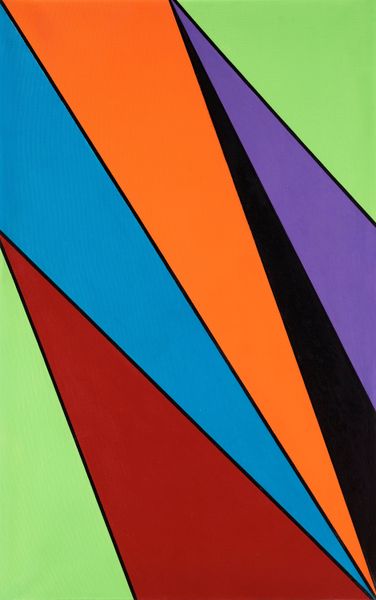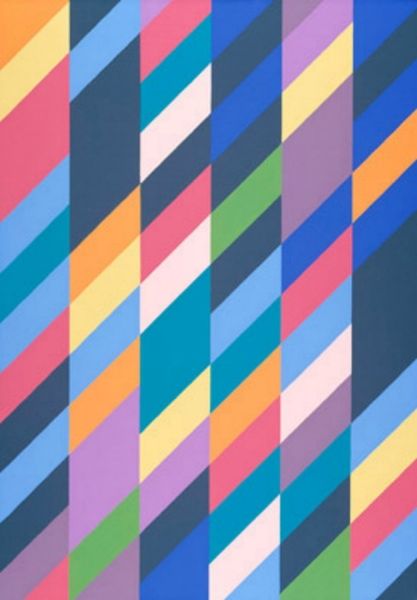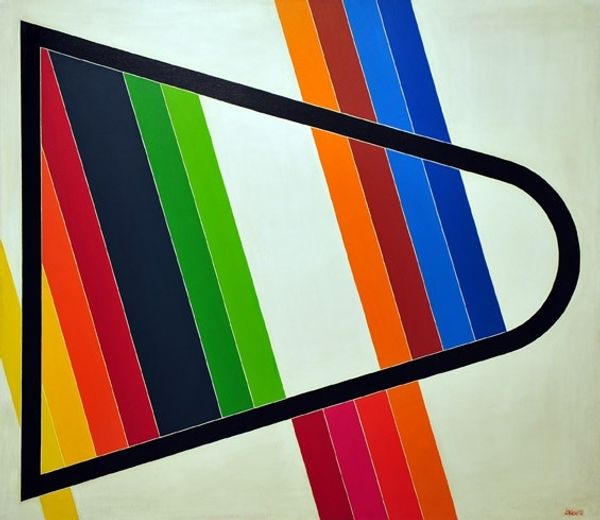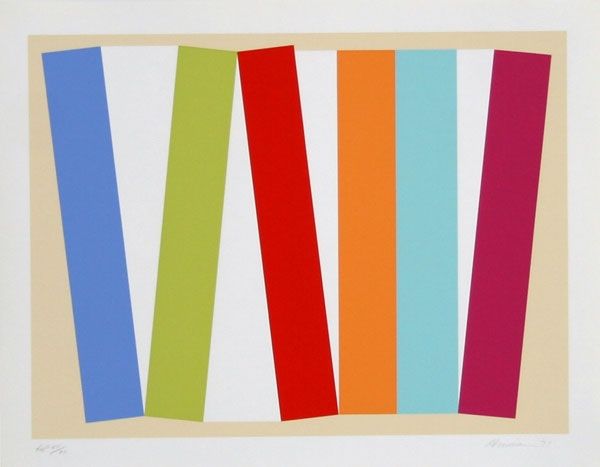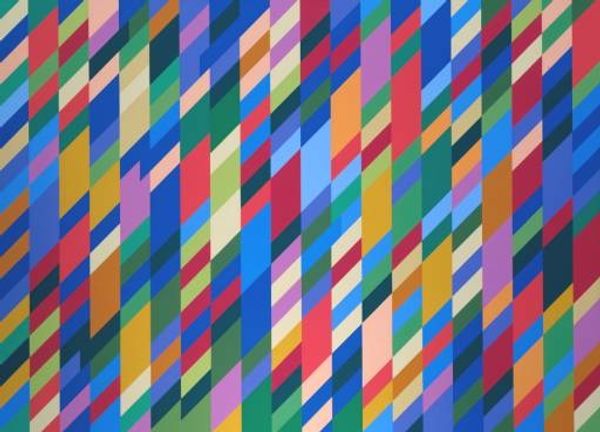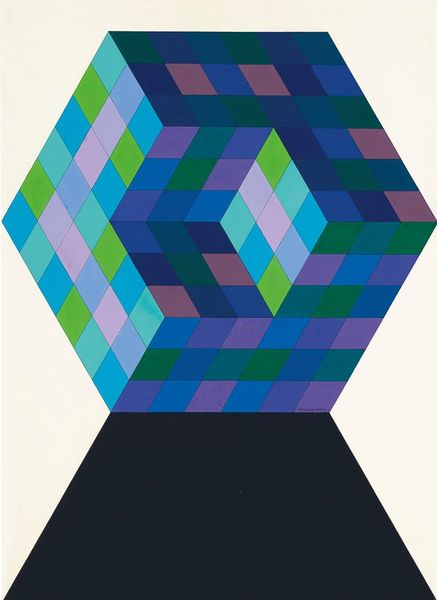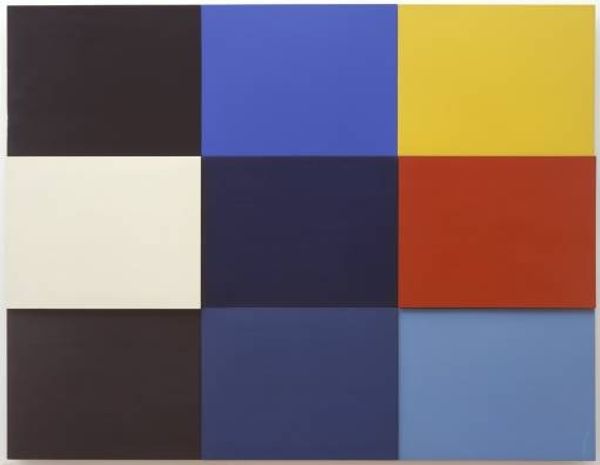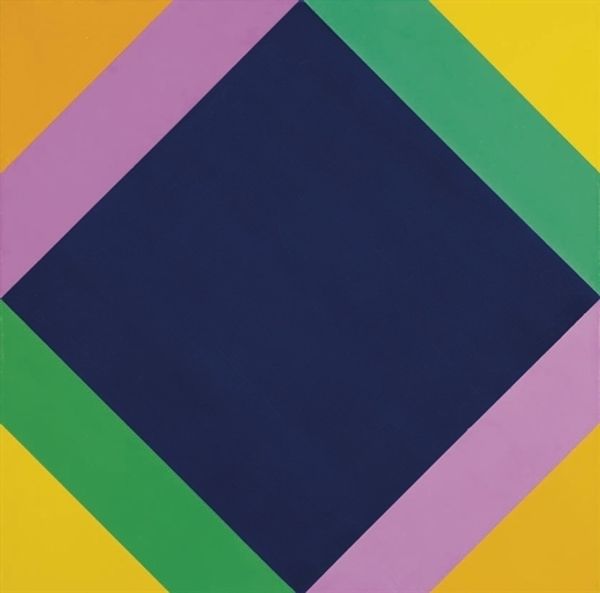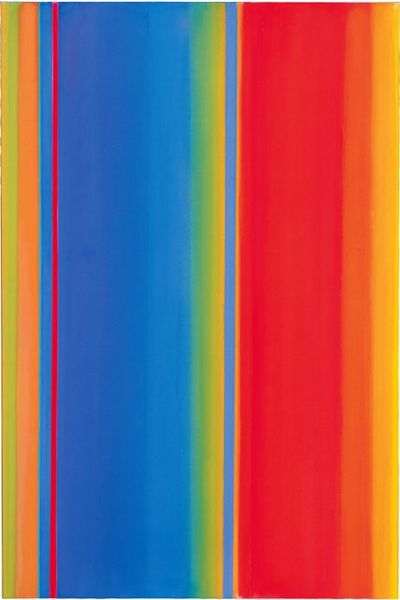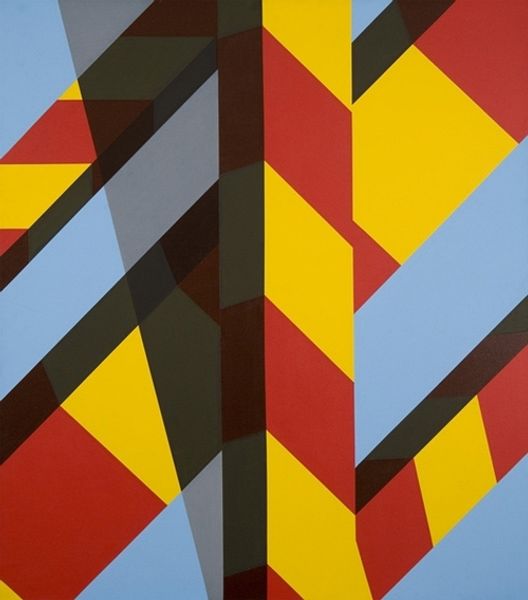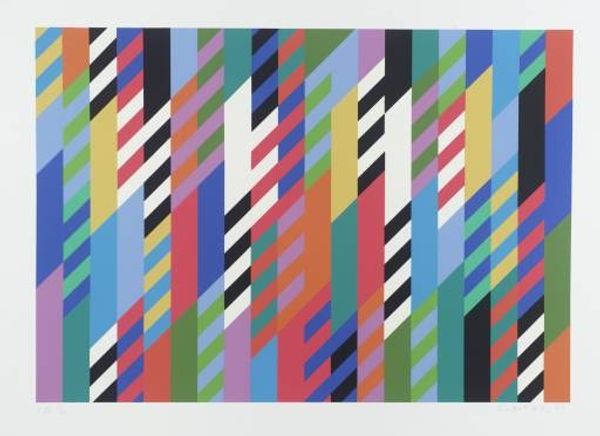
print, acrylic-paint
#
op-art
# print
#
acrylic-paint
#
abstract
#
geometric pattern
#
printed format
#
geometric
#
geometric-abstraction
#
modernism
Copyright: Modern Artists: Artvee
Curator: Victor Vasarely's "Torony-MC-2," created in 1970, immediately strikes me as a feat of pure chromatic exploration. What's your take? Editor: My first thought is disorientation, but in a playful way! The shifting colors and geometric shapes create an optical illusion, like a tower reaching into another dimension. What is its historical placement? Curator: Vasarely, a central figure in the Op Art movement, leveraged acrylic paint to create geometric abstraction exploring perception and space. This piece exemplifies his dedication to disrupting conventional notions, aligning him with larger conversations about challenging the status quo in the era. Its resonance lies in questioning societal norms through visual deception. Editor: I agree. There’s a clear structure based on repeated rhomboids, but the color variations make it seem fluid, almost vibrating. The chromatic relationships definitely speak to Vasarely’s engagement with semiotics—colors acting as signs shifting in value and intensity. Curator: I appreciate that perspective, but consider also the broader cultural backdrop. Op Art emerged during a period of intense social and political upheaval. It becomes compelling to interpret these kinds of geometric patterns not as mere decoration but as subversive forms commenting on institutional and societal strictures, questioning power. Editor: I concede the period and its influence. Even so, it’s the technical execution that holds my gaze. The balance of warm and cool tones, and the carefully calibrated shifts in value within each colored band—it is almost a musical composition! A meticulous study in geometric structure creating a perceptual shift. Curator: Indeed, the precision speaks volumes—perhaps reflecting a calculated pushback against traditional, representational forms and even established social codes. Considering gender and class during this period adds nuanced dimensions, questioning art-world accessibility. Editor: True, but let's also acknowledge the pure aesthetic impact of the work. This print offers a beautiful puzzle, its visual tensions constantly engaging the eye, provoking intellectual pleasure. Curator: Ultimately, it reflects both the precision of formal choices and the potential for disruption through art, a tension between objective structure and subjective, interpretive power. Editor: Well said. It really underscores how something so geometrically simple can unlock multiple interpretive approaches and make you rethink your vision.
Comments
No comments
Be the first to comment and join the conversation on the ultimate creative platform.
